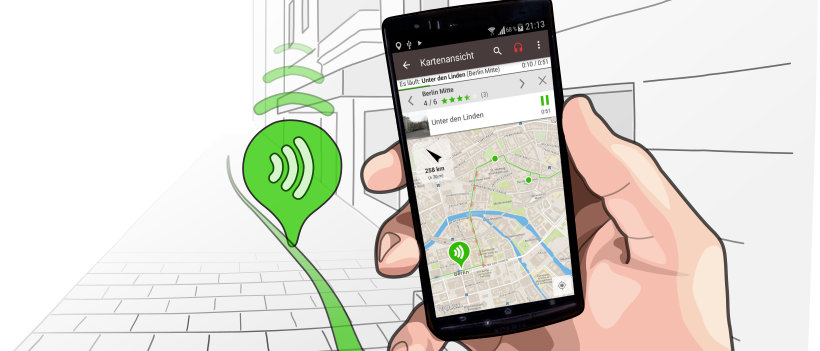The “Black Death”, as the plague was reverently called in the late Middle Ages, did not stop at Cologne either.
The wealthy citizens in particular accused the Jews of poisoning the wells and of being the cause of this “punishment from God”.
And so on August 23 and 24, 1349, devastating acts of violence against the Jewish population in Cologne occurred, months before the plague actually spread in the city:
There was already “news” of the “Black Death” in southern Europe and southern Germany and the Jews were quickly identified as the culprits.
The persecution of the Jews benefited many, especially those who took out loans from Jewish bankers:
Since 1266, the so-called “Jewish privilege” had been in place, which allowed Jews to lend money at interest.
But those who wanted to keep the Jewish wealth for themselves were also instigators and supporters, although the church largely held back.
Here in the former Jewish quarter, the mob raged in August 1349.
Did you know that the Jewish community in Cologne is the oldest north of the Alps? As early as 331, the then Emperor Constantine allowed Jews to be appointed to the city council.
By the Middle Ages, a synagogue, hospice, wedding house and around 70 Jewish homes were built near today’s town hall.
So in the Middle Ages, equality and peaceful coexistence with Christians were over for the time being: I have just told you about the terrible plague pogroms of 1348-1350 and the background to them.
Most of the Jewish quarter was destroyed.
Until 1798, Jews were not allowed to settle on the left bank of the Rhine in Cologne, and so Jewish communities were established in Deutz.
It was only the Prussians who brought the Jews back to the left bank of the Rhine in Cologne, and so the Jews settled here again, but this time in a decentralized manner. Cologne owes a lot to the Jewish Oppenheim family in particular, as Abraham Oppenheim co-financed a large part of the completion of the cathedral and the construction of a synagogue in Glockengasse at the end of the 19th century. When mentioning well-known Jewish citizens of Cologne, one should not forget Jacques Offenbach, the famous composer.
As in other parts of the German Reich, Jews in Cologne were persecuted, expropriated and killed during the Nazi era. From October 1941, the systematic extermination of Jews began in Cologne with the first deportations to concentration camps.
The six Cologne synagogues and other places of worship were also largely destroyed by the Nazi pogroms and bombings during the Second World War.
Only about 8,000 of the 19,000 Jewish citizens survived Nazi terror and the Holocaust.
According to current plans (September 2024), a museum called “MiQua” will be built on this site of the former Jewish quarter from 2027:
Cologne’s history will then be brought to life above and below ground (up to the town hall). The city’s Jewish history will also be presented in the area of the former Jewish quarter.
You can find out more about Jewish history in Cologne here.
Podcast “Between tolerance and persecution: Jewish life around 1100”
*Our next destination is the Gürzenich, which is known far beyond Cologne’s city limits, where I will also tell you interesting things about the history of the Cologne Carnival. Follow the route shown here for about 200 m on foot *
Image source 1st image: June 2014: Excavation area, By © Raimond Spekking / CC BY-SA 4.0 (via Wikimedia Commons), CC BY-SA 4.0, https://commons.wikimedia.org/w/index.php?curid=33463857
Image source 2nd image: The Jewish privilege in Cologne Cathedral, By © Superbass / CC BY-SA 4.0 (via Wikimedia Commons), CC BY-SA 4.0, https://commons.wikimedia.org/w/index.php?curid=61632828
Image source 3rd image: By author unknown - own photo in the EL-DE House, public exhibition, public domain, https://commons.wikimedia.org/w/index.php?curid=3286677



